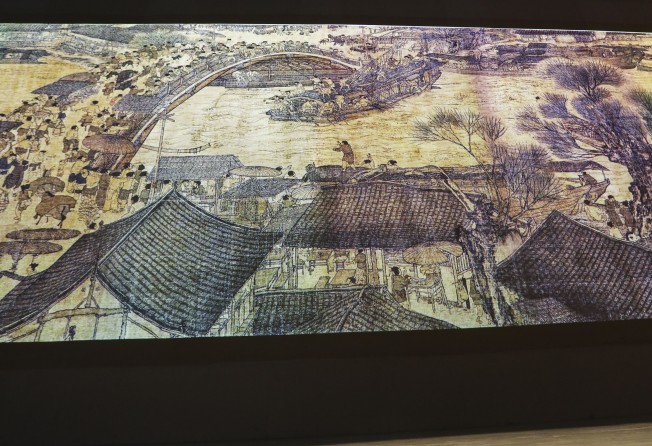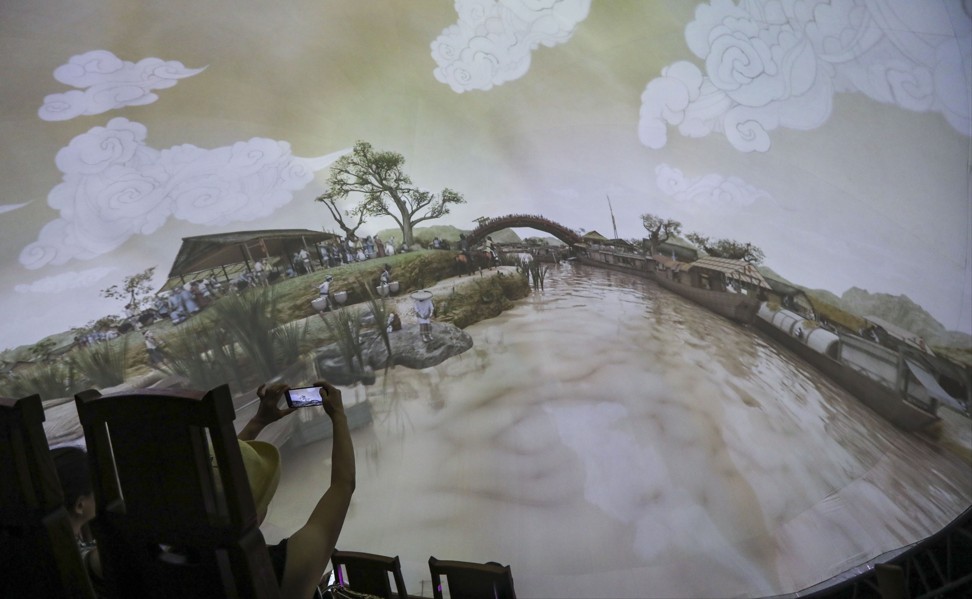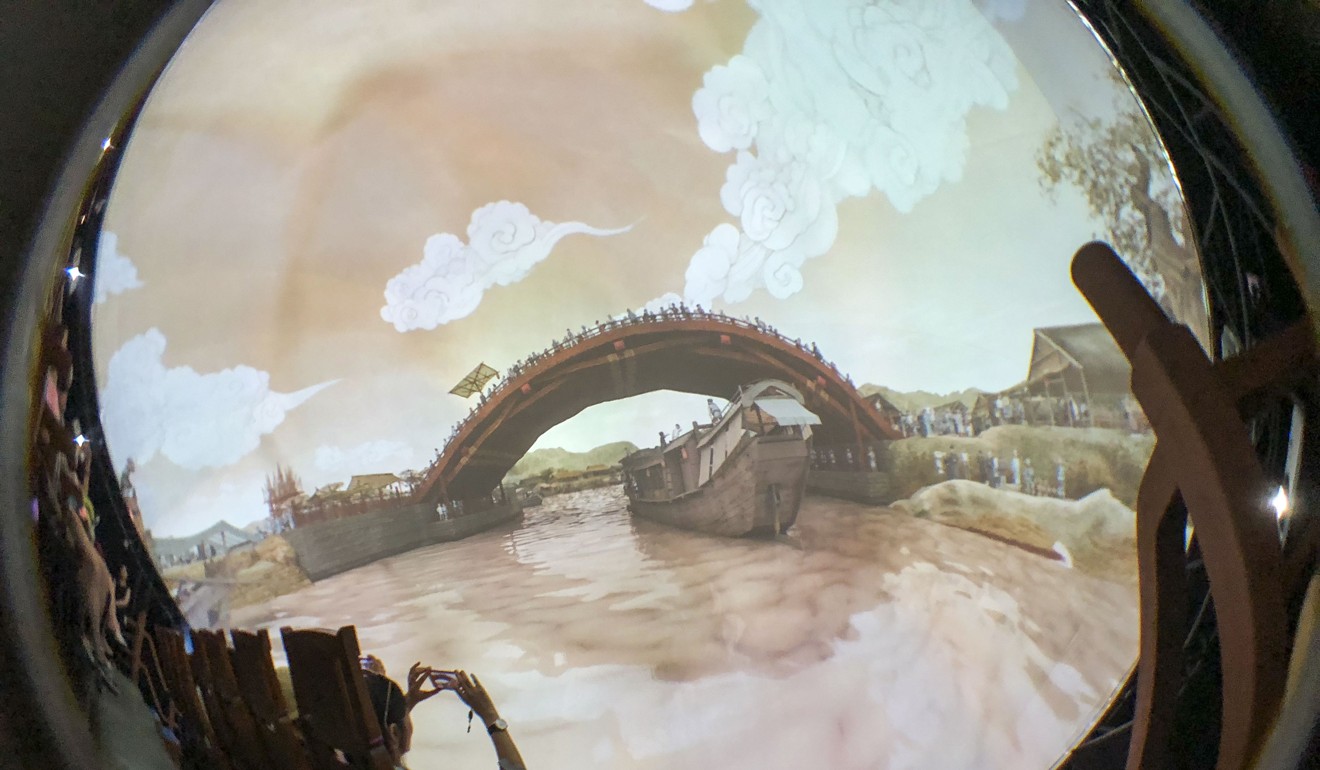Classic Chinese painting brought to life in 4D interactive rendering at Beijing’s Palace Museum
Audiences can experience 12th-century life in China, thanks to the immersive 4D rendering of imperial artist Zhang Zeduan’s Along the River During the Qingming Festival currently on display at the Palace Museum in Beijing

Along the River During the Qingming Festival, a classical Chinese painting by imperial artist Zhang Zeduan, is famed for its detailed depiction of day-to-day street life along the Bian River in Bianjing, the capital of the Northern Song dynasty. Now you can literally step inside this masterpiece and experience the hustle and bustle of the ancient city in a new 4D rendering of the 5.3-metre-long scroll at the Palace Museum in Beijing.
Jointly presented by the museum and Phoenix TV, “Life Along the Bian River at the Pure Brightness Festival – High-Tech Interactive Art Exhibition” is an elaborate upgrade of the animated version of the painting that went on show at the China Pavilion during the 2010 World Expo in Shanghai (a duplicate of which came to Hong Kong in 2010).
One section of the show recreates a scene from the painting, featuring actors playing a cashier and waiter in an ancient tavern. As they did hundreds of years ago, customers are seated at a table of four with a wine urn placed in the middle.
Above them are more characters – a Chinese flute player, fortune-teller and drunks staggering along the corridor – but these are digitally rendered. There is guqin music playing in the background and the lively performance concludes with petals showering down onto the visitors.
Another highlight is a long animated sequence made up of vignettes depicted in the original Along the River During the Qingming Festival.
Featuring a total of 814 characters, 73 domesticated animals, more than 50 vehicles and boats, and some magnificent architecture including bridges and city walls on a 36 metre by 4.8 metre digital panel, visitors embark on a pictorial journey that slowly moves them from one scene to another, through bobbing boats, swaying willow trees, hard-working beasts of burden and touting vendors.

Wang Xiaodong, president of Phoenix Digital Technology, says the exhibition, which comprises three zones, took two years and 40 million yuan (US$6,020,000) to put together.
“The demands of visitors are getting more sophisticated in today’s digital age,” he says. “The animated characters were all hand-drawn by a team of painters.”
Like Loving Vincent , “the world’s first fully painted feature film” that recreated hundreds of 19th century Dutch painter Vincent van Gogh’s works and made their elements appear to move, the production team had to create tens of thousands of paintings “to flesh out the 814 characters”, says Wang. “Just a moving wheel of a cart needs dozens of pictures.”
Wang says the new show, which is being staged inside the 1,600 sq m Archery Pavilion of the Palace Museum, aims to offer visitors an immersive experience. One exhibit is a touch-activated digital scroll that allows curious visitors to zoom into the tiniest details – down to the Chinese signs adorning the doors of taverns – in the painting. And if they run out of time (there is a lot to see in the show), “they can also download an app to further enjoy the painting at home,” says Wang.

Offering a detailed glimpse of architecture and life in what scholars and historians believe to be Bianjing, near today's Kaifeng in Henan Province, Zhang's piece is one of the richest pictorial records of how the Chinese lived 900 years ago. The painting even shows customs and traditional practices that have long died out in China.
What “Life Along the Bian River at the Pure Brightness Festival” sets out to do is to bring these details to life. An digitally animated stone footpath – on which visitors can “splash around” in virtual water puddles – for instance is intended to recreate the experience of walking in the rain in a back alley during the Northern Song dynasty.

The short presentation ends with a bird’s-eye view of the river along which residents release orange sky lanterns into a star-streaked sky filled with luminescent fireflies.
Freda Huang, chief executive and founder of Phoenix TV Culture Link Development Company, says they want to use hi-tech to present China’s ancient history.

Wang adds Phoenix TV will explore more collaborative opportunities with the Palace Museum to boost cultural tourism in China. “We will explore how to present other Chinese heritage using sophisticated technology such as augmented reality. Digitalising Chinese ancient culture is a strategic development [goal] for Phoenix Digital Technology,” he says.
Running until October, “Life Along the Bian River at the Pure Brightness Festival” will tour to other Chinese cities and is expected to come to Hong Kong at the end of the year.